Section 106 Applicant Toolkit
Synopsis
The ACHP developed this toolkit to provide information and guidance on the Section 106 process to parties who are the recipients of, or are applying for federal licenses, permits, assistance, or approvals. Because many federal agencies require applicants to assist in complying with the initial steps of the Section 106 process, applicants will benefit from these tools and access to resources necessary to be effective in this role. By better understanding the requirements of Section 106, applicants can make informed decisions about how they can best facilitate Section 106 reviews, avoid project delays, and improve outcomes. The toolkit provides an overview of the Section 106 process and information on the four-step process, consulting with states and Indian tribes, engaging stakeholders, and avoiding inadvertent activities that may adversely affect historic properties.
Section 106 of the National Historic Preservation Act
In the National Historic Preservation Act of 1966 (NHPA), Congress established a comprehensive program to preserve the historical and cultural foundation of the nation as a living part of community life. Section 106 of the NHPA is a crucial part of that program that requires consideration of historic preservation in the many projects with federal involvement that take place every day across the nation
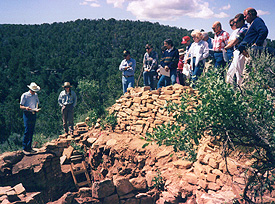
Tip: Section 106 of the NHPA requires federal agencies to consider the effects on historic properties of projects they carry out, assist, fund, permit, license, or approve.
All federal agencies under the executive branch of the U.S. government are subject to the requirements of Section 106, including independent regulatory agencies. Complying with Section 106 is a federal agency responsibility and, while applicants may be asked to carry out some of the tasks for completing a Section 106 review, the federal agency remains responsible for all findings and determinations. Only when authorized by federal statute may non-federal entities be delegated legal responsibility for Section 106 compliance. For example, Congress authorized the Department of Housing and Urban Development (HUD) to delegate certain federal environmental duties, including Section 106 compliance, to a state, tribal, or local government through the Housing and Community Development Act of 1974. In certain instances, where an approved Section 106 program alternative is in place, a federal agency may authorize an applicant or other non-federal entity to undertake specified review responsibilities. The Federal Communications Commission has done so through its nationwide Programmatic Agreement, executed in 2004.
Section 106 requires federal agencies to consider the effects on historic properties of projects they carry out, assist, permit, license, or approve (undertakings). Federal agencies must also provide the ACHP a reasonable opportunity to comment on such undertakings before the approval of the expenditure of any federal funds on the undertaking or before the issuance of any license. Agencies comply with Section 106 through the process in the implementing regulations, “Protection of Historic Properties” (36 CFR Part 800). The regulations implementing Section 106 can be found on the ACHP’s Web site at . A fundamental goal of the Section 106 process is to ensure that federal agencies consult with interested parties to identify and evaluate historic properties, assess the effects of their undertakings on historic properties, and attempt to negotiate an outcome that will balance project needs and historic preservation values.
Section 106 review encourages, but does not mandate, a preservation outcome and recognizes that sometimes there is no way for a project to proceed without affecting historic properties. Based on the information gathered through the Section 106 process, a federal agency may make an informed decision to approve, change, or deny a project. Therefore, the outcome of Section 106 reviews can range from avoidance of historic properties to the acceptance of extensive adverse effects to historic properties. The Section 106 process ensures that a federal agency assumes responsibility for the consequences of its undertakings on historic properties.
Although the Section 106 regulations do not mandate a timeframe within which a federal agency must complete its review, the federal agency should plan for the time needed to consult to resolve adverse effects to historic properties at the beginning of the project planning process. Depending on the circumstances and the consultation process, a federal agency may conclude its Section 106 review with a finding of “no historic properties affected” or “no adverse effects to historic properties.” Should the proposed undertaking pose adverse effects to historic properties, the agency must consult to attempt to reach an agreement on how to resolve those adverse effects. Consulting parties participate with the federal agency in the preparation of an agreement document, typically a Memorandum of Agreement (MOA) or Programmatic Agreement (PA), which establishes the agreed upon measures to resolve the adverse effect and the roles and responsibilities of the agency and the consulting parties. If the signatories cannot come to an agreement, the agency must request and consider ACHP comments. If an agreement is reached, the agency must implement all agreed upon measures set forth in the resulting MOA or PA.
Defining an Undertaking for Section 106 Review
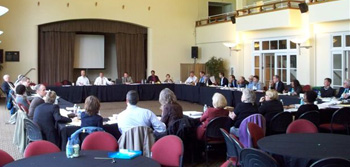
Tip: When defining the undertaking, the applicant should supply a project description, conceptual plans, and maps. An applicant should consider conducting background research on the potential historic properties that may be located in the project’s area of potential effects (APE) and identifying interested parties, including Indian tribes, that may have an interest in the project’s effects on historic properties. An applicant should discuss with the federal agency any other potential federal agency approvals needed for their project so that the agency can better plan for and coordinate with other agencies on Section 106 review responsibilities.
- Is a federally owned or federally controlled property involved in the project, such as a military base, park, forest, office building, post office, or courthouse? Will approval be required to use federal lands for a right-of-way or associated activity?
- Will a project that is receiving federal funds, grants, or loans involve any bricks and mortar activities? Will it involve ground disturbance or excavation? If it is a transportation project, does the project include financial assistance from agencies such as the Federal Highway Administration, the Federal Railroad Administration, or the Federal Transit Administration?
- Does the project require a federal permit, license, or approval to cross wetlands, operate a dam or wind turbines, or to site a telecommunications tower? Does the project involve filling wetlands or affect navigable waterways that requires a Corps of Engineers permit?
- Does a privately funded undertaking require the use of federal lands to connect a linear activity such as a gas or oil pipeline or broadband? Has the applicant been advised to obtain a federal permit, approval, or license?
Although these questions can assist in determining whether an undertaking exists, an applicant should remember there are many other examples and types of projects that are undertakings that have the potential to affect historic properties.
Role of the Applicant
Tip: A federal agency should identify the applicant for the consulting parties and indicate the extent to which the applicant is available to engage in the Section 106 review.
The spectrum of applicants is diverse, from private property owners to large corporations, which may participate in the Section 106 process in various capacities consistent with the scale of their involvement in the undertaking. Each applicant should have an understanding of the Section 106 process and what its potential participation and responsibilities might involve. An applicant seeking federal funding, permits, licenses, or approvals is encouraged to actively participate in the Section 106 process. The applicant should contact the federal agency early in project planning to determine which procedures it must follow to obtain federal approvals and which actions it might be required to carry out on behalf of the agency. In some instances, the agency may follow the procedures in the Section 106 regulations that allow it to delegate the initial steps of the Section 106 process to an applicant.
Although the federal agency is ultimately responsible for Section 106 compliance, an applicant may play a vital role in the Section 106 review by completing archaeological studies or other research activities, for example, or by initiating consultation when authorized to do so by the federal agency. A federal agency may ask an applicant in the Section 106 process to pay for the cost of meetings, travel, maintaining the administrative record, or studies to inform the review.
Major Participants in the Section 106 Review
Many different participants play a role in the Section 106 review. Certain parties are entitled to participate in Section 106 consultation, and these parties must be identified and invited into the process by the federal agency responsible for complying with Section 106.
Tip: An applicant should support the engagement of consulting parties early in the Section 106 review so that the consulting parties will understand the project schedule and identify major preservation issues early in project planning.
Tip: The federal agency should initiate consultation with Indian tribes and Native Hawaiian organizations and share information with them early in the Section 106 process.
- Federal Agency conducts Section 106 review for all undertakings with the potential to affect historic properties prior to approving the expenditure of any federal funds on the undertaking or the issuance of any license or permits. The federal agency is responsible for managing the project schedules and milestones, coordinating the consultation process, and identifying and inviting all the consulting parties. When multiple federal agencies are involved in an undertaking, a lead federal agency may be designated for Section 106 review. The agency determines how the Section 106 process will be coordinated with National Environmental Policy Act (NEPA) and other environmental reviews to avoid duplication of effort and protracted consultations. For many HUD-assisted programs, like CDBG, the local, state, or tribal government (on tribal lands) is legally responsible for Section 106 review.
- Applicant is the non-federal entity that requires federal assistance, or an approval, license, or permit for an undertaking. An applicant should work closely with the federal agency in the Section 106 review process. An applicant may be a developer, a state department (such as transportation, energy, commerce, and community affairs), or a landowner.
- State Historic Preservation Officer (SHPO) is the state official responsible for many preservation related duties in the state and reflects the interests of the state and its citizens in the preservation of their cultural heritage. The SHPO is the federal agency’s primary partner in the Section 106 process and advises and assists the federal agency in carrying out its Section 106 responsibilities.
- Tribal Historic Preservation Officer (THPO) is the tribal official responsible for all or part of the functions of the SHPO with respect to tribal lands. The THPO provides advice to and consults with the federal agency in the Section 106 process. On tribal lands, the THPO is the federal agency’s primary partner in the Section 106 process.
- Indian tribes and Native Hawaiian Organizations (NHOs) are entitled to consult on undertakings that may affect historic properties of religious and cultural significance to them, regardless of location. A federal agency must conduct government-to-government consultation with federally recognized Indian tribes and such consultation should be conducted in a sensitive manner respectful of tribal sovereignty. Indian tribes and NHOs possess special expertise in identifying and assessing the eligibility of properties that may possess religious and cultural significance to them for the National Register of Historic Places, whether located on and off tribal lands. They also possess expertise in assessing effects to these resources.
- Local Government Officials are those officials with jurisdiction over the area in which the effects of an undertaking may occur. These officials may be a county or city manager or their deputies, the planning director, or the local historic preservation planner officer, or Certified Local Government contact. Local planning, regulatory, and environmental issues often intersect with the Section 106 review of federally funded projects.
- The ACHP is an independent federal agency that oversees Section 106 review and issues the regulations that implement it. The ACHP must be notified when an undertaking may adversely affect a historic property. The ACHP exercises its discretion in deciding to participate in the consultation process. The ACHP issues formal comments to the head of an agency when an agreement is not reached on how to resolve an undertaking’s adverse effects. The ACHP also participates in the development of program alternatives under the regulations, and coordinates with federal agencies and consulting parties on these program alternatives.
Other parties may also participate in the Section 106 consultation.
Tip: The applicant and the federal agency should coordinate on the development of a strategy for informing the public about the undertaking and its potential effects to historic properties at the initiation of project planning.
- Other interested parties may include individuals or organizations with a demonstrated interest in the undertaking, including a legal or economic interest, or who are concerned with the undertaking’s effects on historic properties. Although some of these entities may become involved in the Section 106 process as consulting parties, many others may only want to stay informed about project planning. Examples of these consulting parties include property owners, local historic preservation societies, and neighborhood associations. Statewide and national preservation organizations, such as the National Trust for Historic Preservation, frequently request consulting party status due to their interest in a project’s effects to historic properties.
- The general public Members of the public are not typically considered consulting parties by agencies but do play an important role in the process. Section 106 requires a federal agency notify the public of proposed projects and offer the public an opportunity to provide input in a timely manner. A member of the public with a demonstrated interest in an undertaking may request and receive consulting party status from the federal agency.
Four Steps in the Regular Section 106 Review Process
The goal of the Section 106 process is to identify and avoid, minimize, or mitigate adverse effects on historic properties. The process has four basic steps: establish the undertaking, identify and evaluate historic properties, assess effects to historic properties, and resolve any adverse effects. The steps must be carried out sequentially. For example, an agency cannot assess the effects of the undertaking on historic properties until it has identified and evaluated historic properties within the APE. The federal agency must consult with the SHPO; THPO; appropriate state, local, and tribal officials; Indian tribes; NHOs; applicants; and any other consulting parties in identifying historic properties, assessing effects, and resolving adverse effects, and provide for public involvement.
Tip: Expediting the four-step process may not exclude or limit the involvement of consulting parties.
If a project has the potential to alter characteristics that make a property historically significant, that project is considered to have an “adverse effect.” Adverse effects can be direct or indirect, and include all immediate and reasonably foreseeable effects to the property.
Where adverse effects are found, consultation among the agency, applicant, and consulting parties, including the ACHP in some cases, is pursued to develop avoidance alternatives or mitigation measures to resolve adverse effects.
It is important for applicants to understand Section 106 terminology and concepts. When applicants have been authorized to initiate the Section 106 process by the agency (see more information in the following topic area, “Authorization to Initiate Consultation” and Applicants), knowledge of these terms and definitions is critical. Likewise, the applicant should be familiar with the federal agency’s internal guidance, policies, and procedures to fully assist in the Section 106 review.
The following list provides guidance on the applicant’s role in the regular Section 106 process when the applicant has not been authorized by the federal agency to initiate consultation:
Step 1: Establish the Undertaking and Initiate Section 106 Process: Applicant’s Role

- Confirm with the agency that Section 106 review is required for the proposed undertaking.
- Inquire whether any Section 106 program alternative, such as a PA, applies to the undertaking.
- Notify the agency about other stakeholders who may have an interest in the project and wish to be consulting parties.
- Secure qualified consultants, as needed, to help inform the federal agency’s identification and evaluation of historic properties and assessment of effects; applicants are encouraged to contact the SHPO, THPO/tribe, NHO, or trade associations for assistance in identifying appropriate consultants (the Register of Professional Archaeologists provides information on archaeologists: http://www.rpanet.org/, and the American Cultural Resources Association is the trade association for cultural resources: http://acra-crm.org/.
- Coordinate with the agency to determine how existing public notification and outreach procedures may be used to facilitate Section 106 public involvement.
Step 2: Identify Historic Properties: Applicant’s Role

Tip: The National Register of Historic Places, administered by the National Park Service, is the nation’s official list of properties recognized for their significance in American history, architecture, archaeology, engineering, and culture. Section 106 requires consideration not only of those properties listed on the National Register, but also of those properties that are eligible for listing.
- Assist in defining the APE.
- Provide the agency with existing information on historic properties and the results of prior surveys and research.
- Work with the federal agency and SHPO/THPO to develop or propose a scope of work to the federal agency and SHPO/THPO to conduct historic preservation/cultural resource surveys and studies.
- Respond to research questions and other inquiries from the agency.
- As requested by the agency, research potential historic properties that may be located in the APE by contacting local preservation commissions, universities, historical societies, and statewide and local preservation organizations; search the SHPO’s survey files and other appropriate sources.
- Provide information and make recommendations to the agency regarding determinations of National Register eligibility.
- Assist the agency in providing information to the SHPO/THPO and other consulting parties regarding the agency’s eligibility determinations.
Step 3: Assess Effects: Applicant’s Role
- Assist the agency in its efforts to assess effects to historic properties and provide analysis and information to the agency, SHPO/THPO, and other consulting parties.
- Help develop ideas to avoid adverse effects, such as modifying site or building plans, realigning linear projects, or proposing other project alternatives.
- Collaborate with the agency about public outreach, adhering to agency procedures as appropriate.
Step 4: Resolve Adverse Effects: Applicant’s Role
- Be flexible and seek creative solutions that meet project needs while avoiding or minimizing impacts to historic properties by actively participating in the consultation process.
- Conduct any required studies to inform the development of project alternatives to avoid or minimize adverse effects.
- Help facilitate the preparation of either the MOA or PA, as requested by the agency.
- If invited by the agency, or if assigned responsibilities in the agreement, sign the MOA or PA as an invited signatory or concurring party.
- Assist the agency in implementing mitigation measures as set forth in the MOA or PA.
“Authorization to Initiate Consultation” and Applicants
The Section 106 regulations recognize that the federal agency may need the assistance of an applicant to coordinate the Section 106 review. The regulations allow a federal agency to authorize an applicant to initiate consultation in a specific project or program, provided that the agency first notifies the relevant SHPO/THPO in writing of the authorization. The agency should also include the ACHP in this notification. While the SHPO/THPO does not approve such authorization, the required advance notice avoids confusion and provides agency contact information. In addition, the notice verifies that the federal agency will be available, if needed, to assist with Section 106 consultation.
Tip: An applicant authorized to initiate the Section 106 review should remember to develop an administrative record and be diligent in following the process.
Under such an authorization, an applicant may be allowed to consult with the SHPO/THPO to initiate the Section 106 review process, identify and evaluate historic properties, and assess effects. Regardless of the extent of the authorization, the federal agency will remain responsible for participating in the consultation process when:
- the undertaking may adversely affect a historic property; there is a disagreement between the applicant and the SHPO/THPO regarding identification and evaluation of a historic property, and/or the assessment of effects;
- there is an objection from consulting parties or the public regarding the findings and determinations, the implementation of agreed upon provisions, or their involvement in a Section 106 review;
- a tribe requests the federal agency remain involved; or,
- there is the potential for a foreclosure situation under 36 CFR § 800.9(b) or an anticipatory demolition under 36 CFR § 800.9(c).
Moreover, despite these authorizations, the federal agency remains responsible for ensuring that all consultations with Indian tribes are conducted in a sensitive manner respectful of tribal sovereignty and the government-to-government relationship between the federal government and Indian tribes. An agency may not delegate consultation with Indian tribes to an applicant unless the affected tribes have agreed to such an arrangement in advance.
Through such an authorization, the applicant can facilitate the agency’s compliance with several steps in the Section 106 review process. An applicant should ask the federal agency whether it has an authorization letter that covers its program(s) or project(s).
The “authorization to initiate consultation” described above affects the role of an applicant in the regular Section 106 process. Further, if a properly executed PA or other program alternative approved by the ACHP provides an alternate process for complying with Section 106 for a program or project, its terms may define a particular role and responsibilities for the applicant that may differ from those in the regular process.
Finally, as mentioned before, an applicant can be delegated legal responsibility over Section 106 compliance through legislation, such as MAP-21.
Coordinating Section 106 With Other Federal, State, and Local Reviews
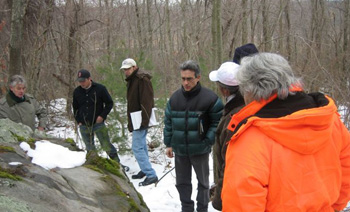
Section 106 should be coordinated as appropriate with other applicable federal, state, and local review requirements. Local administrative reviews such as use permits, zoning, variances, or planning commission reviews and approvals may inform the Section 106 review, and are important to the federal agency. Since state and local reviews do not require federal involvement, these reviews are typically completed by the applicant. However, the applicant should keep the federal agency informed of these non-federal reviews, as they may be relevant to the Section 106 process, and the information developed to meet their requirements may be useful for Section 106 compliance.
The agency should outline all required federal review requirements early in project planning with the applicant. As the party responsible for compliance with these other authorities, and because an applicant may be unfamiliar with these federal requirements, the federal agency should be the point of contact for coordinating such related reviews. While compliance with one or more of these other statutes generally does not substitute for compliance with Section 106, a federal agency is authorized to use the process and documentation required for NEPA to substitute for the Section 106 procedures so long as the standards of 36 CFR§ 800.8(c)(1) are met.
NEPA and Section 106
NEPA requires that all federal agencies ensure an environmental review is completed when they propose a federal action. Each federal agency develops its own internal NEPA regulations to implement this review process. NEPA covers a broader scope of resources than Section 106; however, federal agencies should coordinate their compliance with NEPA and Section 106 and consider their Section 106 responsibilities as early as possible in the NEPA process. Agencies should plan their public participation, analysis, and review in such a way that they can meet the purposes and requirements of both statutes in a timely and efficient manner. Applicants should remember that consultation under Section 106 is different from public involvement under NEPA and requires more interaction with consulting parties. Applicants need to be familiar with NEPA documents and their possible use for Section 106. When a project is categorically excluded from NEPA review, Section 106 review may still be required. Section 106 must be completed before an agency signs a decision document for NEPA (e.g., a Record of Decision).
Tip: SHPOs and THPOs should be contacted early so they can collaborate on the identification of historic properties and inform the development of alternatives.
Section 106 in Emergency and Disaster Responses
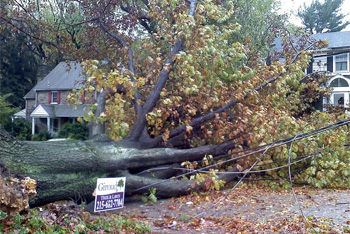
As part of project planning, an applicant should be aware of any procedures or PA that the federal agency has established related to disaster or emergency declarations. The emergency situations section of the Section 106 regulations, 36 CFR § 800.12(b), applies only to undertakings that will be implemented in response to the disaster or emergency within 30 days after the disaster or emergency has been formally declared by the appropriate authority or, in the case of another immediate threat to life or property, within 30 days after such an event occurs.
Tip: An applicant should always seek updates from a federal agency regarding efficiencies established to expedite Section 106 reviews in emergencies.
Several federal statutes and programs establish disaster response operations that may influence an agency’s actions and subsequent Section 106 responsibilities, such as the Robert T. Stafford Disaster Relief and Emergency Assistance Act, which directs Federal Emergency Management Agency (FEMA) programs responding to a disaster or emergency declared by the President; see http://www.fema.gov/about/stafacts.htm.
Section 106 Training for Applicants
The ACHP provides training on Section 106 for federal and non-federal entities. Applicants are encouraged to attend the training which is scheduled in various locations each year. Courses are taught by ACHP staff and are offered to beginners and more advanced practitioners. The ACHP has also added a series of distance learning (webinar) courses, often with specific topics, that enhance the training opportunities offered to applicants.
Tip: An applicant should participate in training opportunities on Section 106 and NEPA to ensure he/she understands definitions and concepts related to historic preservation.
Many agencies also offer training on Section 106 and environmental reviews, and often include agency-specific policies for compliance with Section 106 in program guidance and Notice of Funding Availability details. Case studies and best management practices posted on agency Web sites provide a good overview about how to complete Section 106 reviews. Likewise, SHPOs offer periodic training taught by their staff regarding Section 106 reviews.
Helping Section 106 Go Smoothly
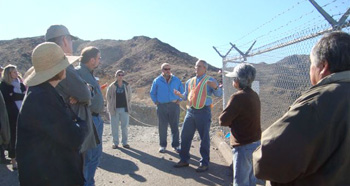
Section 106 will work most effectively and efficiently when an applicant:
Tip: Section 110(k) of the NHPA prohibits a federal agency from granting a loan, loan guarantee, permit, license, or other assistance to an applicant who, with intent to avoid the requirements of Section 106, intentionally significantly adversely affected a historic property to which the grant would relate, or having legal power to prevent it, has allowed such significant adverse effect to occur, prior to a Section 106 review. This provision is often referred to as the “anticipatory demolition” section and is intended to prevent applicants from damaging a historic property prior to Section 106 review.
- assumes an active and informed role in the process at the earliest stages of project planning.
- approaches the consideration of alternatives to avoid or minimize adverse effects with flexibility, creativity, and respect for the interests of other participants in the process.
- is familiar with the federal agency’s policies and guidance and maintains open channels of communication with the agency throughout the process.
- ensures that project schedules provide sufficient time for Section 106 review and are properly coordinated to avoid last minute or rushed consultation.
- avoids taking actions that harm historic properties or making commitments before completing the process.
- selects qualified professional contractors and consultants that have demonstrated capability to carry out the Section 106 process.
- provides adequate documentation to support findings and determinations, which are integral to a thorough and accurate administrative record. carries out agreed-upon measures to avoid, minimize, or mitigate adverse effects to historic properties.